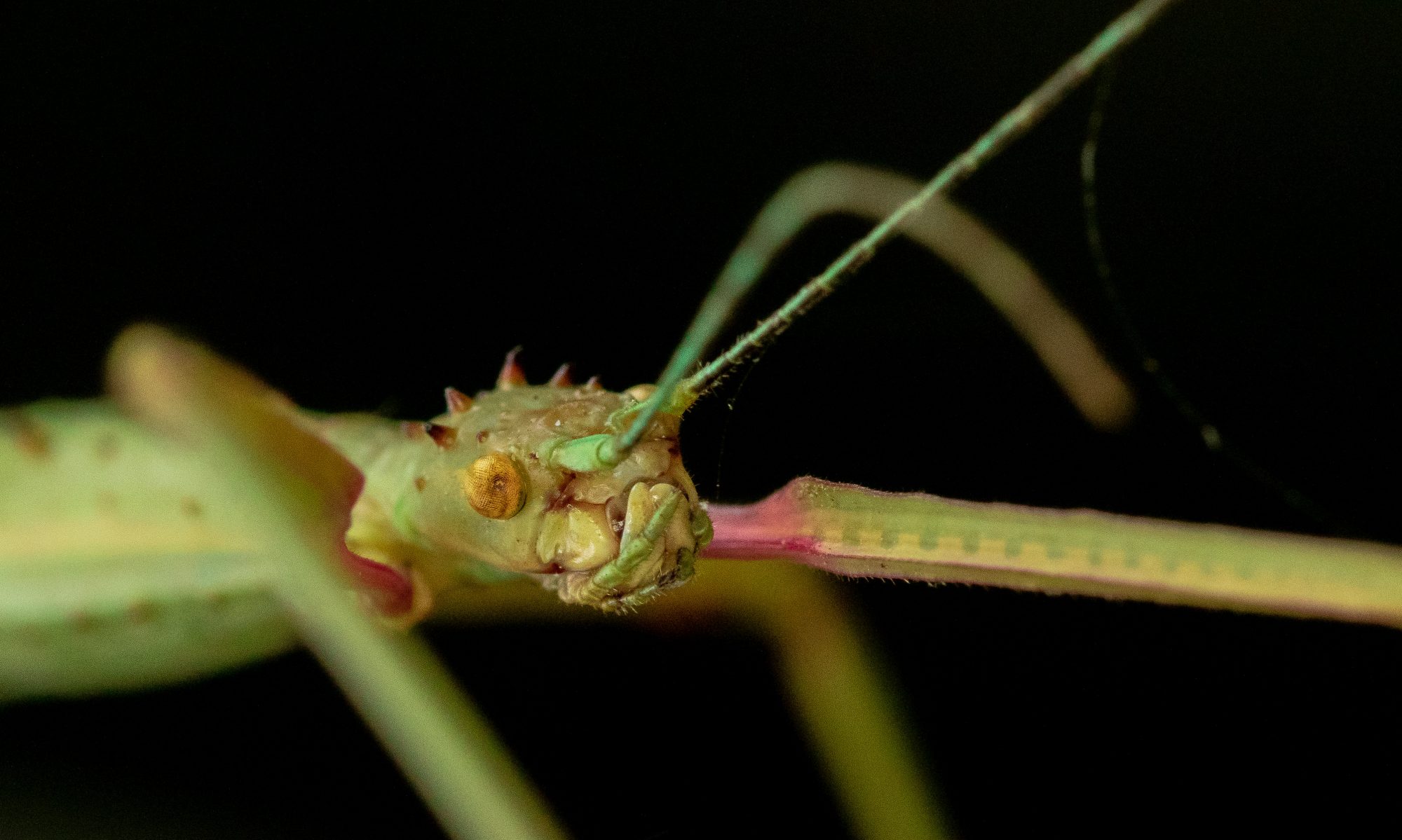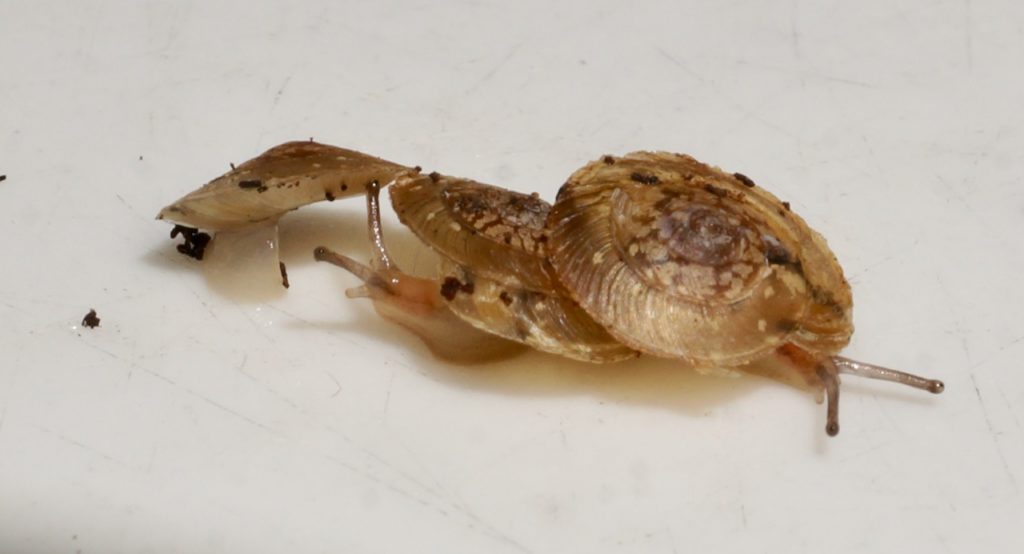
In the Pacific Ocean, east of Australia and about halfway between New Zealand and New Caledonia is Norfolk Island. This tiny island (~30 square kilometres) has a colourful history and enough endemic species to make it very valuable to biologists. Not as famous as the Galapagos Islands or the Hawaiian archipelago, Norfolk Island has its own endemic biodiversity including dozens of species of tiny snails in the forest leaf litter.
During WWII an aeroplane runway was constructed for refuelling Royal New Zealand Air Force (RNZAF) bomber patrols and for a transport service to Bougainville. Construction required relocating families and cutting down Norfolk pines (Araucaria heterophylla), and the runway takes up a huge portion of the land surface of Norfolk Island . The giant ‘T’ of 2.22km and 1.8km imprinted across an island that is only a little over 9km at its widest point. Access by commercial airlines now brings tourists and invasive species to the island on a regular basis. It only takes a couple of hours flying from Auckland to reach Norfolk Island, and there are flights in and out a couple of times each week. Before the runway and the ships that brought people, new species to the island arrived by long-distance dispersal – flying, swimming, ballooning, rafting, and hitch-hitching (Jordano 2016). Consider the many birds that fly to Norfolk Island, some are capable of bringing live snails in their guts. For example, some snails can survive being swallowed by silver-eyes and be found alive in their droppings. These little birds are found on many oceanic islands so can aid dispersal of snails (Zosterops sp. Wada et al. 2012). Ducks (also seen on Norfolk Island) can transport some snail species on the inside (Van Leeuwan et al. 2012). Seabirds, of which Norfolk Island has eight breeding species, are also potential source of long-distant dispersal (Viana 2016).

Norfolk Island was formed about 3.05–2.3 million years ago from several volcanic eruptions (Jones & McDougall, 1973). The terrestrial fauna of Norfolk Island must therefore have developed in just a few million years (<3) from the descendants of long‐distance dispersing ancestors (Holloway, 1977). Many plants and invertebrates endemic to Norfolk Island look similar to species elsewhere in the Pacific. Their ancestors must have dispersed to colonise this volcanic island. Isolated on Norfolk Island, populations have accumulated differences (allopatric speciation) and in many cases can be readily distinguished as similar but different from Australian or New Zealand species. For example, the endangered Norfolk Island coastal shrub Coprosma baueri looks very like New Zealand taupata Coprosma repens and the Norfolk Island Palm (Rhopalostylis baueri) looks like New Zealand nikau (Rhopalostylis sapida). When the Norfolk Island boobook owl (Ninox novaeseelandiae undulata) was down to a single female, it was genetically similar enough to successfully hybridise with a male ruru from New Zealand (Ninox n. novaeseelandiae; morepork) to save the population from extinction (Garnett et al. 2011). The cicada species found on Norfolk Island, Kikihia convicta, is morphologically and genetically sister to the New Zealand species K. cutora (Arensburger et al. 2004). And sister relationships between NZ and Norfolk Island taxa are also seen with the extinct kaka (parrot; Nestor productus) and extinct pigeon (Hemiphaga novaeseelandiae spadicea; Goldberg et al. 2011). These Norfolk Island species have New Zealand affinities, but many others have close relatives in Australia, New Caledonia and other Pacific Islands. For example, of the larger butterflies and moths native to Norfolk Island about 22% are endemic, of which only 10% have New Zealand origins (Holloway, 1977).
Species Radiations
There is considerable species diversity of terrestrial micro-snails in Norfolk Island, best estimates are that there are about 40 living species (Neuweger et al. 2001; Varman 2016). Most are known only from empty shells, and species descriptions of micro-snails usually rely on shells (Stanisic et al. 2010). While on Norfolk Island we focused our effort of getting photographs of the live snails of the common species . We collected snails from the ground from forest leaf litter and from leaves during the day.
We photographed living specimens from as many common species as we could find, with the hope that this resource can be used to provide better tools for their identification in the future and help people conserved the current snail diversity. For example the Pinwheel snail Cryptocharopa exagitans (from the family: Charopidae) is recorded (from empty shells) as the most common micro-snail in mixed forest leaf litter near Duncombe Bay, Norfolk Island (Neuweger et al. 2001). The shell of this pinwheel snail (3.5mm) is recognised by its frill of dried mud around the edge but when alive the tiny snail shell is fantastically camouflaged as rock so very easily over-looked. Our photos show the tiny snail hauling what looks like a stone on its back.
Leaf Beetles
Two species of eumolpine leaf beetle are described from Norfolk Island (Dematochroma shuteae and Dematochroma norfolkiana Jolivet et al. 2007), although it is likely there are more to study. The adult beetles are small and usually brown, bronze or black. They feed at night on leaves but as adults the beetles are probably short lived and likely to be seasonal. Larvae of these beetles live underground feeding on roots. The two known species are probably related to the eumolpine radiation of New Caledonian beetles (Gómez-Zurita 2011), also found in New Zealand and Australia. The leaf beetle species on Lord Howe, look quite different from one another but represent an island radiation from a single recent ancestor. We hope to find out whether the Norfolk Island leaf beetle species also represent an endemic radiation.
By searching in the Norfolk Island leaf litter during the day and at night on foliage we saw numerous individuals of at least four different types/forms that might represent four species. Most beetles were active during the night when mating pairs were frequently observed. One species was predominantly observed on the foliage of Piper excelsum psittacorum, and another species was seen on leaves of Coprosma pilosa. Leaf beetles often have a short season as adults, so one week of observations is likely to have included just a fraction of all Norfolk Island Eumolpinae beetles. We are fairly confident that work on these insects will double the known diversity of leaf beetles from Norfolk Island.
References
Arensburger P, Simon C, Holsinger K. 2014. Evolution and phylogeny of the New Zealand cicada genus Kikihia Dugdale (Homoptera: Auchenorrhyncha: Cicadidae) with special reference to the origin of the Kermadec and Norfolk Islands’ species. Journal of Biogeography 31: 1769-1783.
Goldberg et al. 2012. Population structure and biogeography of Hemiphaga pigeons (Aves: Columbidae) on islands in the New Zealand region. Journal of Biogeography 38: 285-298. https://doi.org/10.1111/j.1365-2699.2010.02414.x
Gómez-Zurita J. 2011. Rhyparida foaensis (Jolivet, Verma & Mille, 2007), comb. n. (Coleoptera, Chrysomelidae) and implications for the colonization of New Caledonia. ZooKeys 157: 33-44.
Holloway, J.D. 1977. The Lepidoptera of Norfolk Island. W. Junk, The Hague.
Jolivet, Verma & Mille 2007. New species of Dematochroma from Lord Howe and Norfolk Islands (Coleoptera, Chrysomelidae, Eumolpinae). Nouv. Revue Ent. 23; 327-332.
Jones, J.G. & McDougall, J. 1973. Geological history of Norfolk and Philip Islands, southwest Pacific Ocean. Journal of the Geological Society of Australia 20: 239–257.
Neuweger et al. 2001. Land Snails from Norfolk Island Sites. Records of the Australian Museum Supplement Nov. 2001. DOI: 10.3853/j.0812-7387.27.2001.1346
Reid C. 2003. Chrysomelidae of Lord Howe Island. Chrysomelidae, 42: 7.
Van Leeuwen et al. 2012. Experimental Quantification of Long Distance Dispersal Potential of Aquatic Snails in the Gut of Migratory Birds. PloS One. https://doi.org/10.1371/journal.pone.0032292
Varman R. 2016. Norfolk Island Snail Species Collections made between January and March 2016. Report to Australian National Parks.
Viana et al. 2016. Migratory Birds as Global Dispersal Vectors. Trends in Ecology and Evolution 31: 763-775.
Wada, et al. 2012 Snails can survive passage through a bird’s digestive system. Journal of Biogeography 39: 69-73













